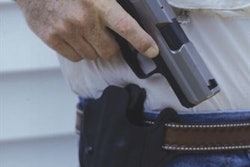Based on these findings, the report says the costly program should end immediately.
Col. Thomas E. Hutchins, the state police superintendent, says he would rather use the money spent on the program—$2.5 million has been spent on it so far—on techniques already known to help solve crimes.
“The system really is not doing anything,” Hutchins says. “The guns that we find at crime scenes may not necessarily be the ones sold in Maryland, so there’s noting to compare it to anyway.”
The report also detailed problems with the way guns’ ballistic information has been collected through the program. In one case mentioned in the report, a gun dealer test-fired the guns instead of the gun manufacturer.
Gun-control activists argue that ballistic fingerprinting systems would be more effective if they were more widely used. Leah Barrett, executive director of CeaseFire Maryland, contends that police are not using the database enough. She also believes that if Maryland stops using the program, others states will never follow suit, preventing a national database, which would be more helpful, from ever existing.















